Abstract
1. In chronically-prepared sheep, intracranial temperatures were measured in the cavernous sinus among the vessels of the carotid rete and at the circle of Willis extravascularly, and in the preoptic area and in other brain stem regions. Extracranial temperatures were measured intravascularly in the carotid or internal maxillary arteries and on the nasal mucosa and the skin of the ear.
2. At 20° C ambient temperature, shifts in temperature of the hypothalamus and of other brain sites paralleled temperature shifts in the cerebral arterial blood which was cooler than central arterial blood. During periods of arousal and of paradoxical sleep, vasoconstriction of the nasal mucosa and the ear skin occurred and temperatures at the cerebral arteries and in the brain rose without a comparable rise in central arterial blood temperature.
3. Anaesthetic doses of barbiturate abolished the temperature oscillations in the cerebral arterial blood and the brain. When air was blown rapidly over the nasal mucosa in anaesthetized animals, temperatures dropped precipitously in the cavernous sinus, at the cerebral arteries, and in the brain, while central arterial temperature fell only slightly. Injections of latex into the facial venous system demonstrated a venous pathway from the nasal mucosa to the cavernous sinus.
4. When sheep were exposed to 45-50° C ambient temperature, respiratory rate increased 5-10 times and the temperature gradient between central and cerebral arterial blood widened.
5. It is concluded that venous blood returning from the nasal mucosa and the skin of the head to the cavernous sinus cools the central arterial blood in the carotid rete. This is an important factor in the maintenance of hypothalamic temperature in the wool-covered, long-nosed, panting sheep and undoubtedly affects hypothalamic thermoreceptors and temperature regulation in artiodactyls.
Full text
PDF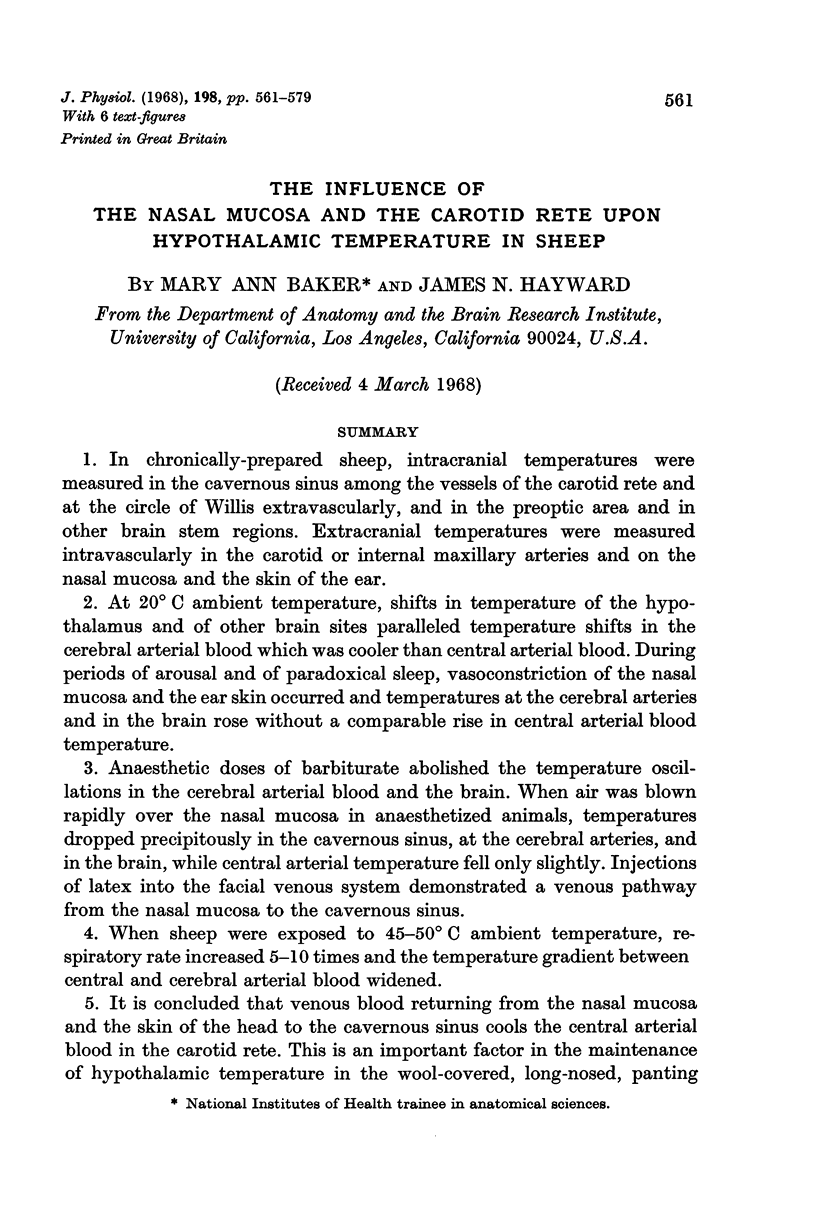
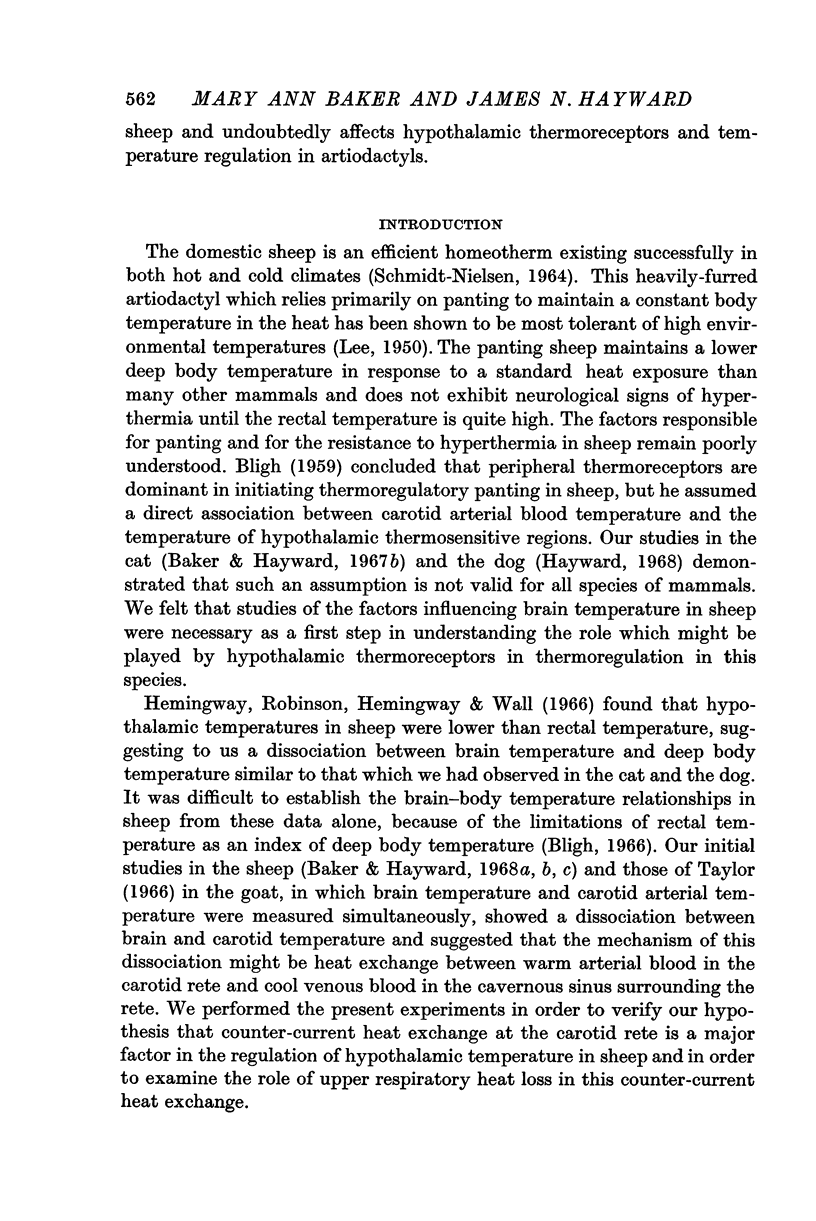
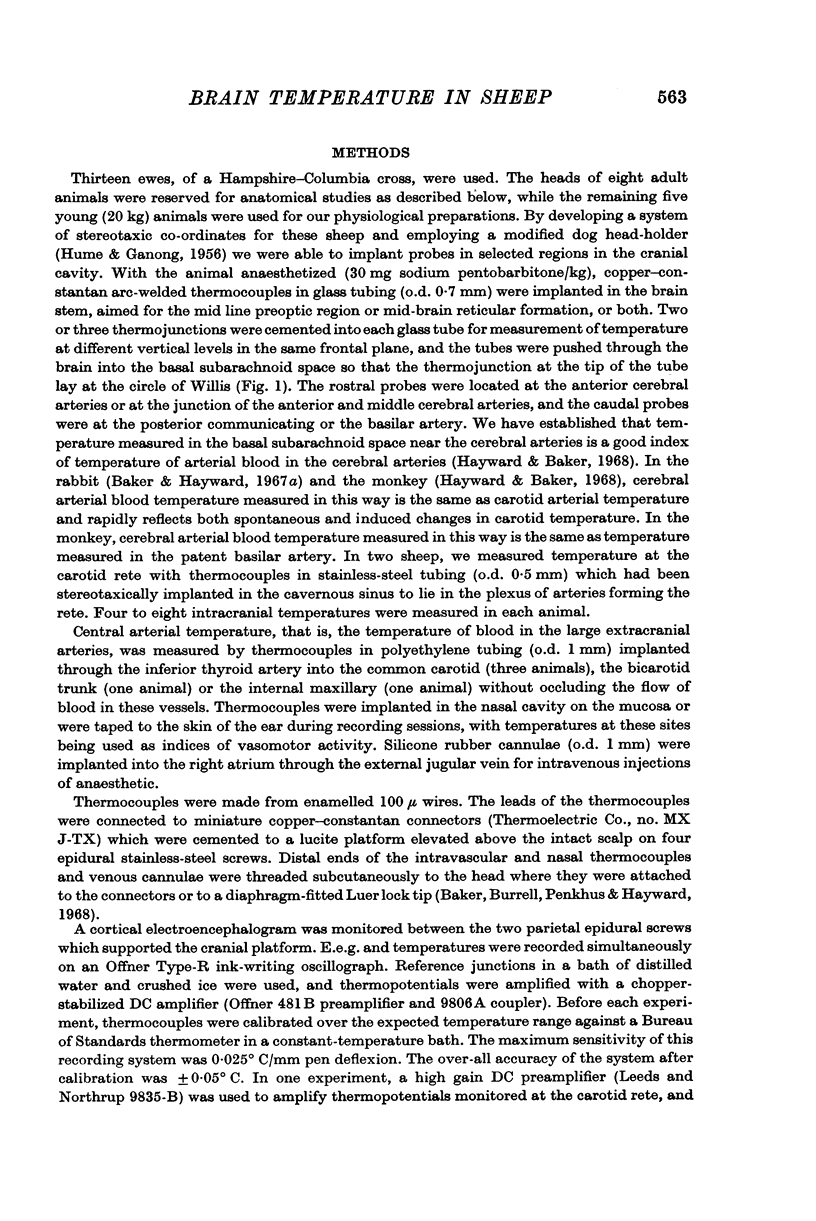
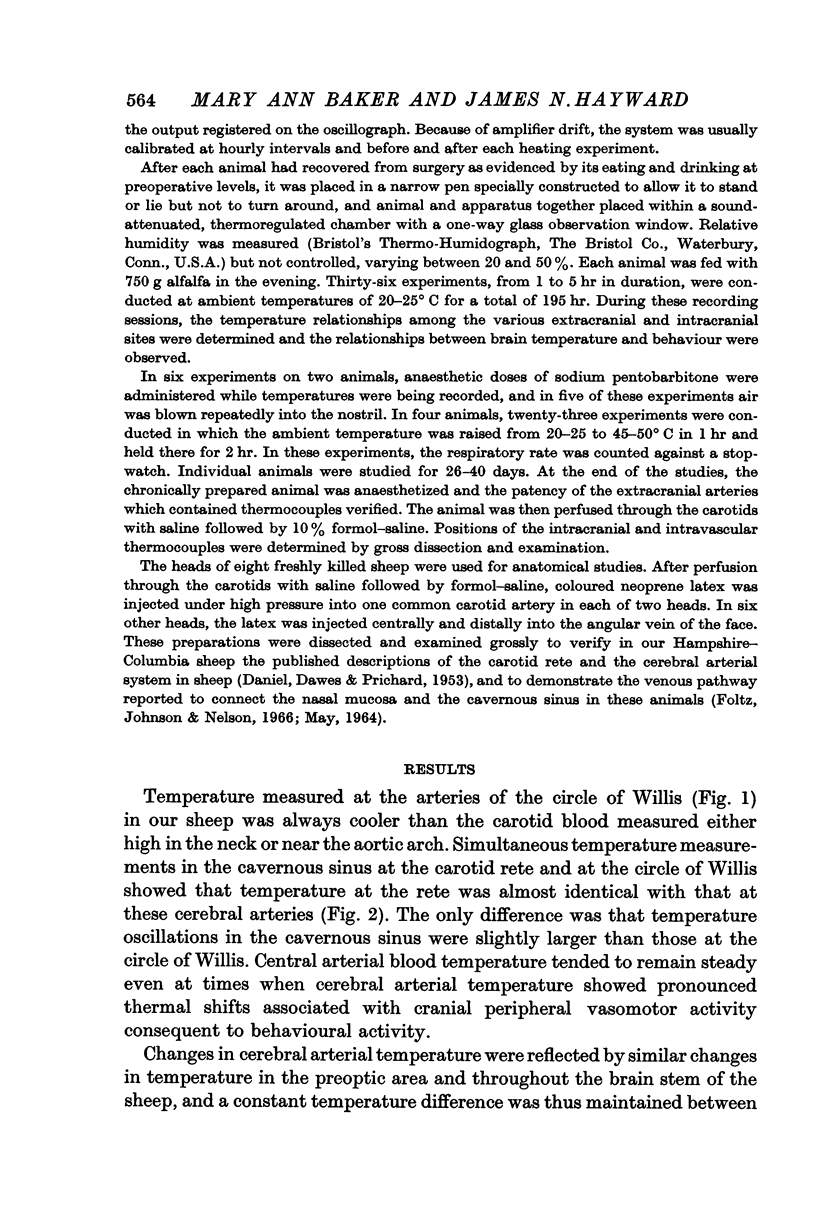
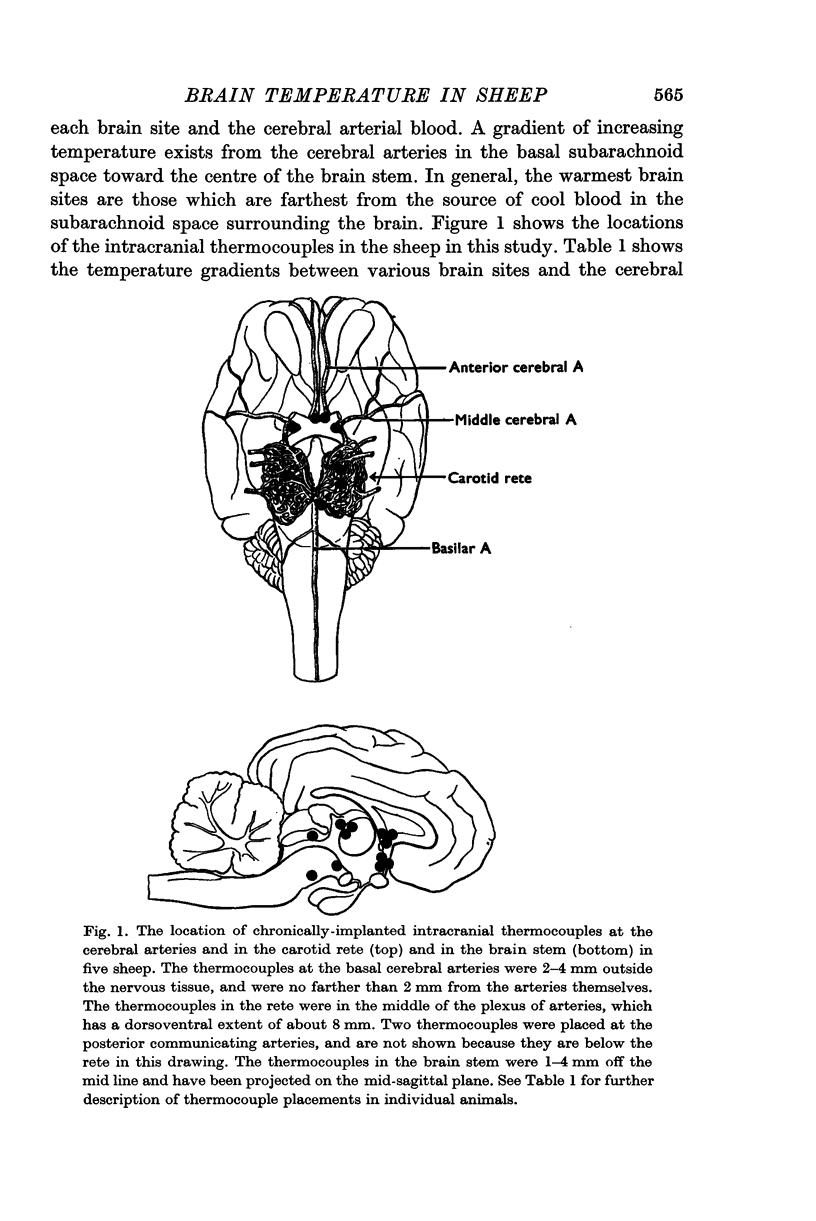


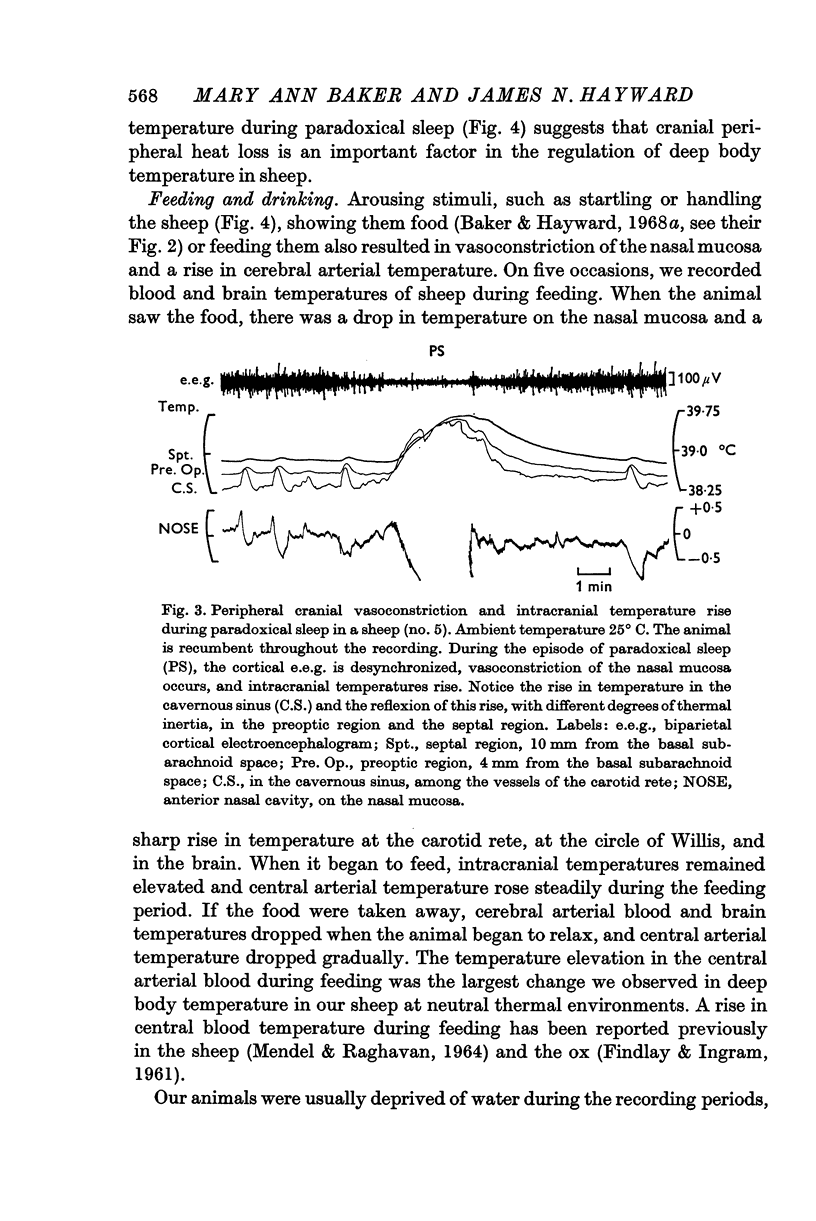
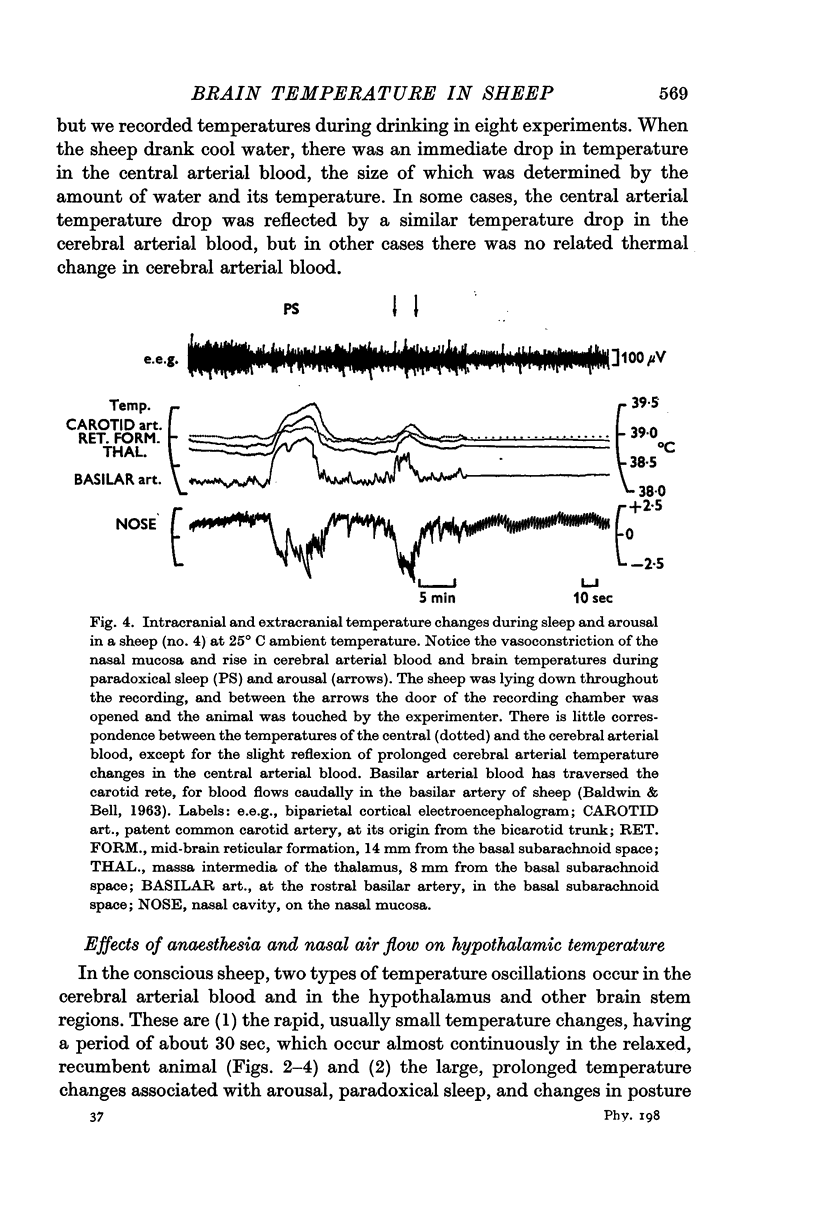
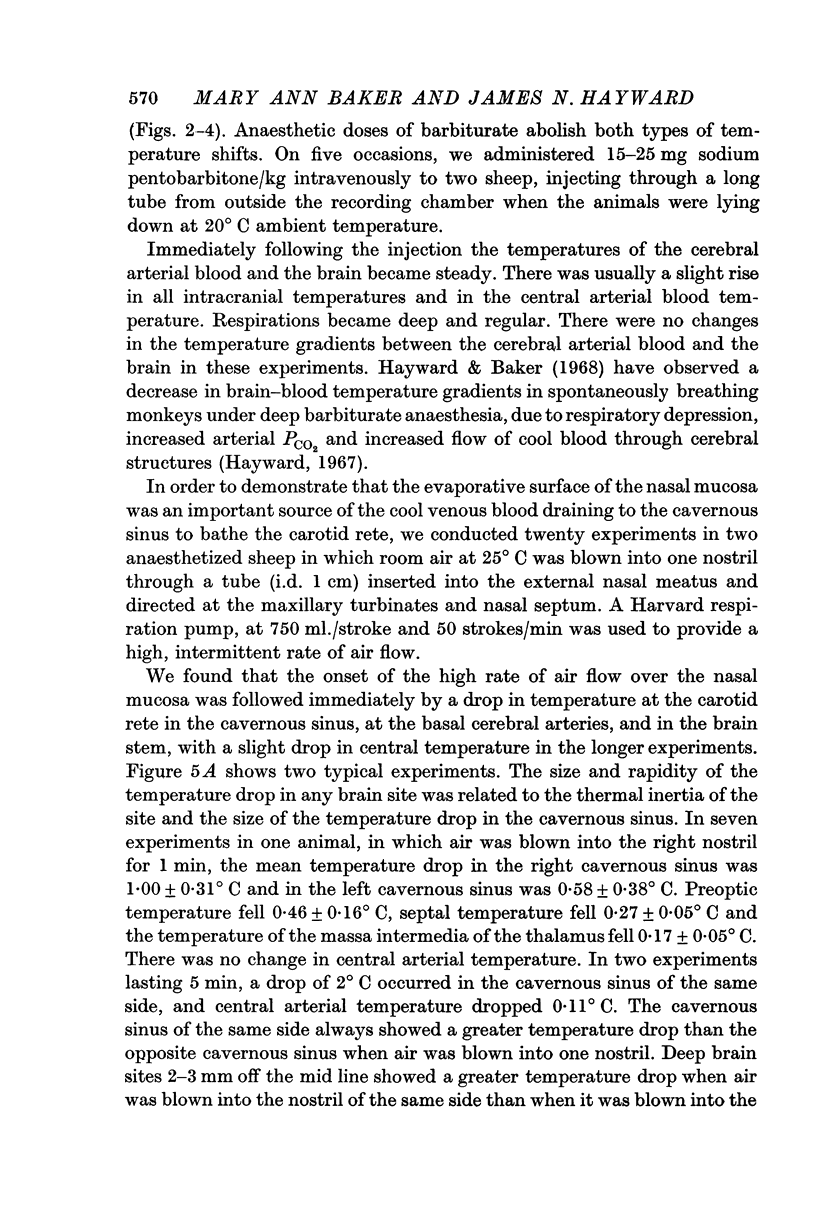
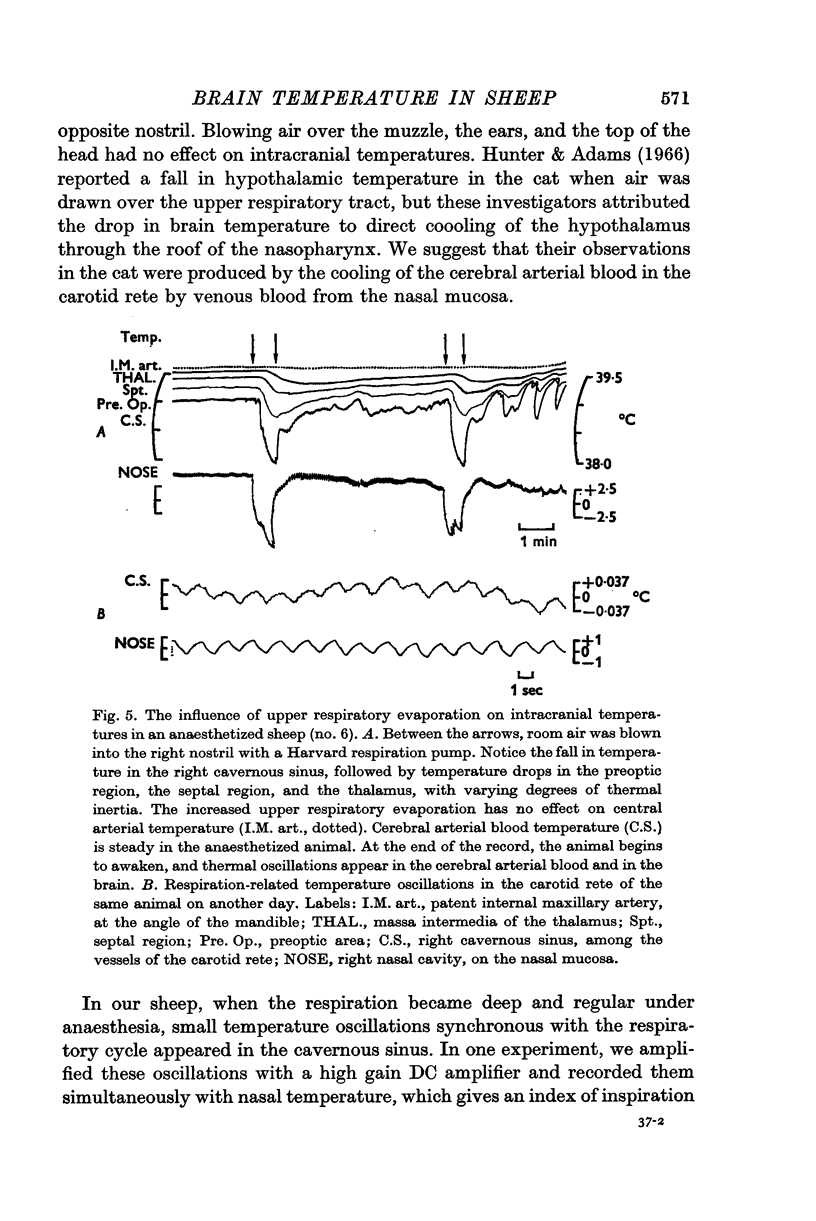


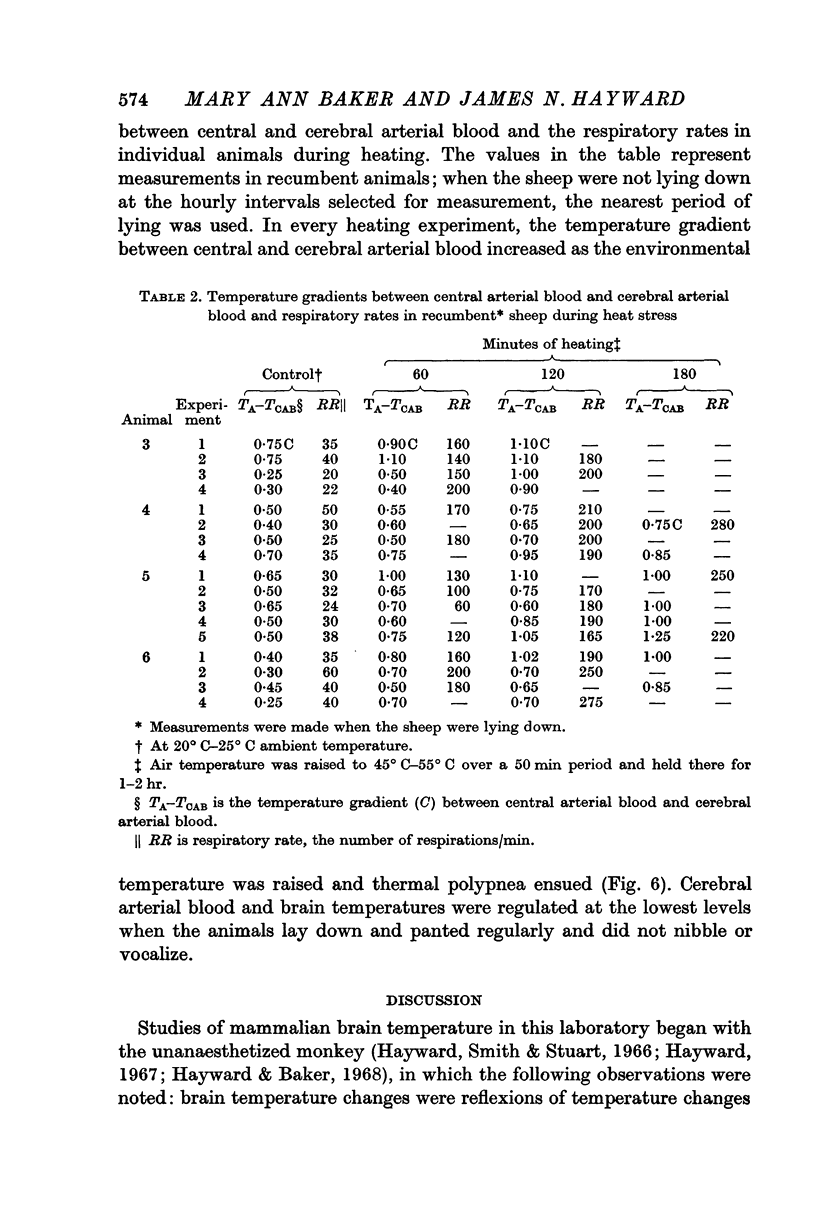
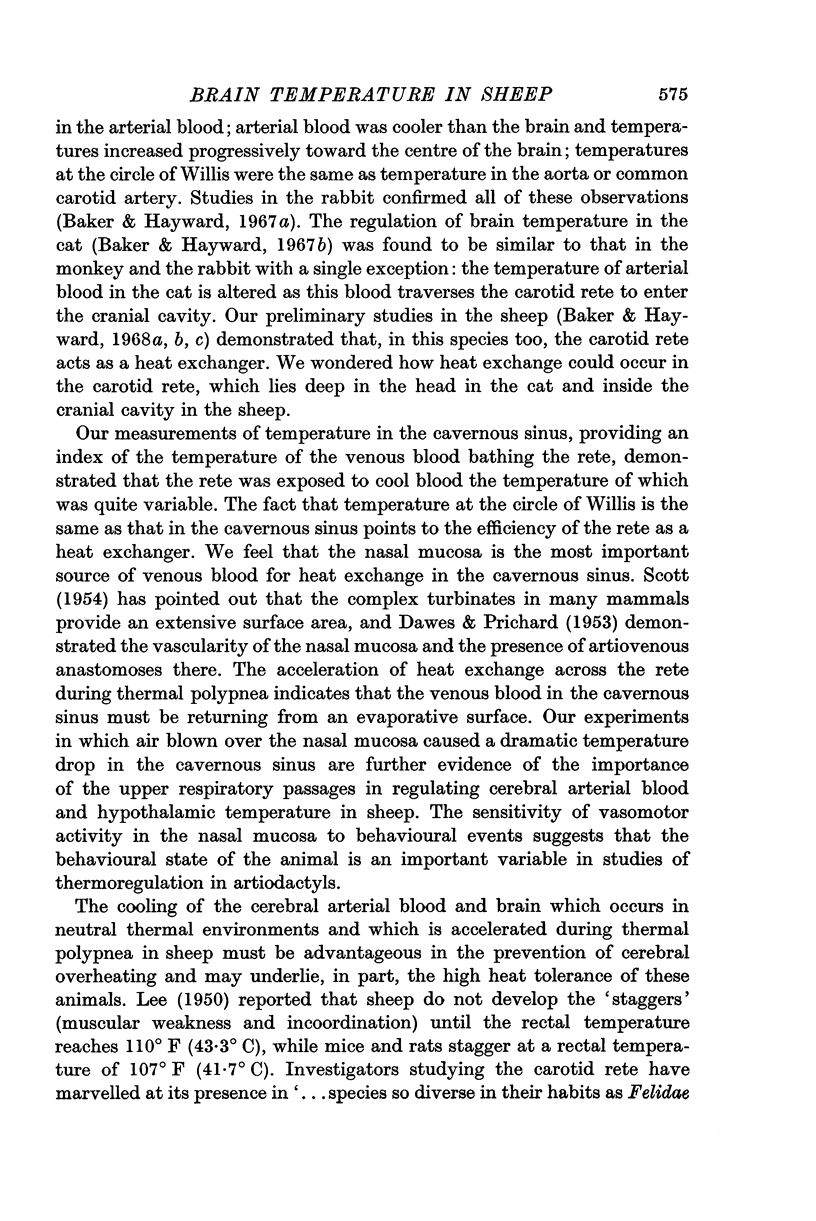
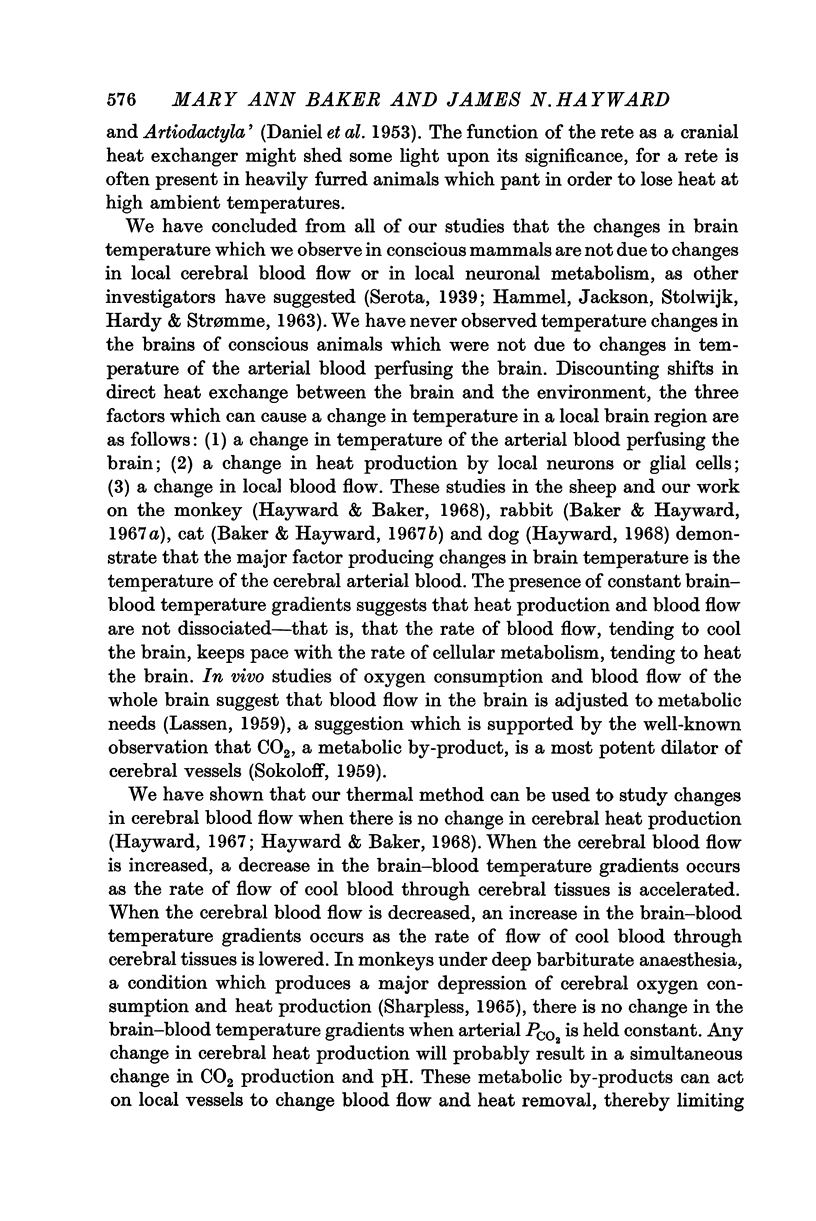
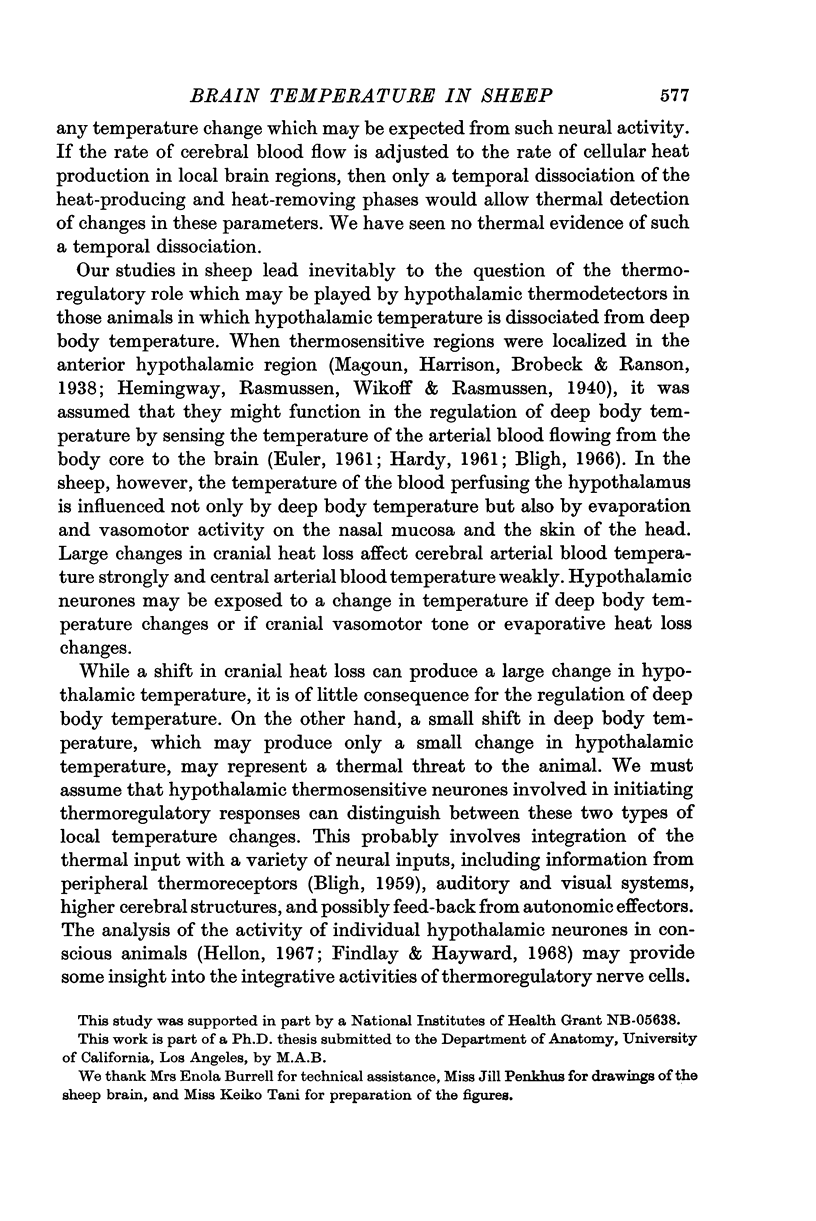
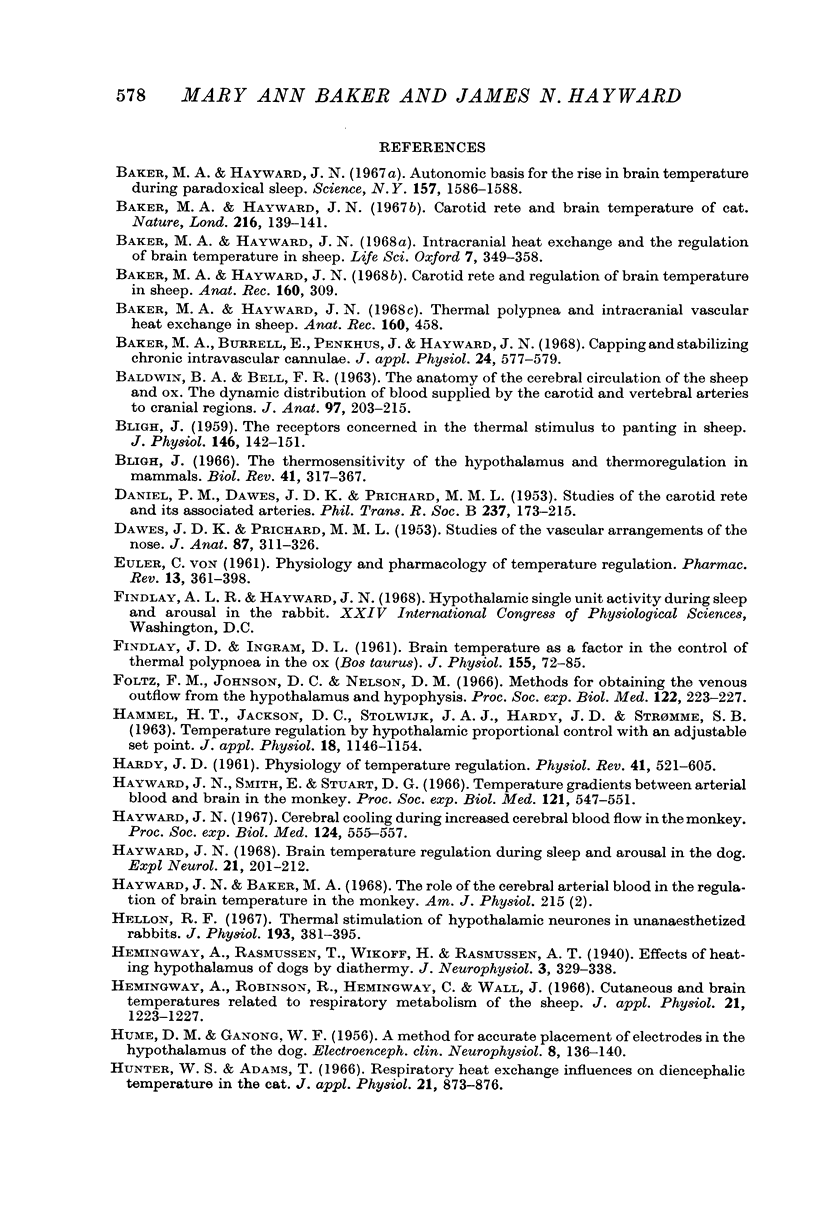
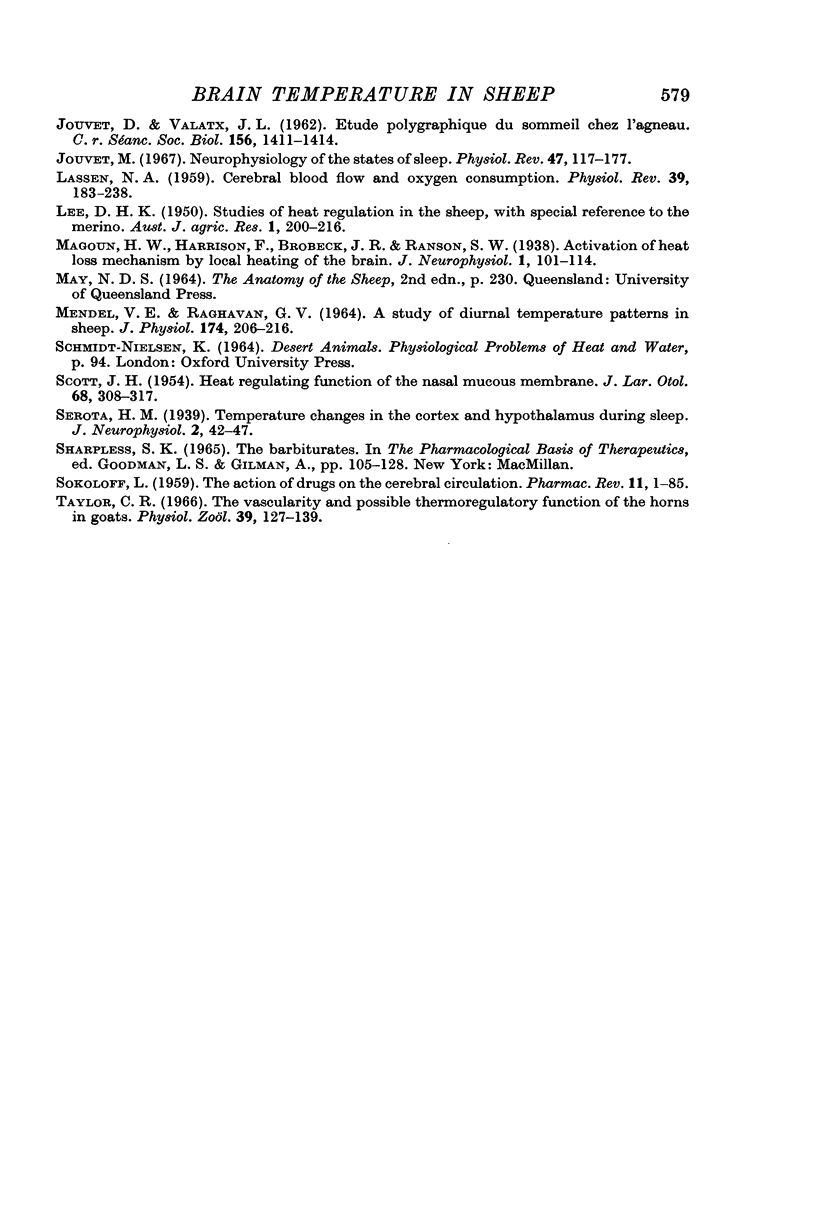
Selected References
These references are in PubMed. This may not be the complete list of references from this article.
- BALDWIN B. A., BELL F. R. The anatomy of the cerebral circulation of the sheep and ox. The dynamic distribution of the blood supplied by the carotid and vertebral arteries to cranial regions. J Anat. 1963 Apr;97:203–215. [PMC free article] [PubMed] [Google Scholar]
- BLIGH J. The receptors concerned in the thermal stimulus to panting in sheep. J Physiol. 1959 Apr 23;146(1):142–151. doi: 10.1113/jphysiol.1959.sp006184. [DOI] [PMC free article] [PubMed] [Google Scholar]
- Baker M. A., Burrell E., Penkhus J., Hayward J. N. Capping and stabilizing chronic intravascular cannulae. J Appl Physiol. 1968 Apr;24(4):577–579. doi: 10.1152/jappl.1968.24.4.577. [DOI] [PubMed] [Google Scholar]
- Baker M. A., Hayward J. N. Autonomic basis for the rise in brain temperature during paradoxical sleep. Science. 1967 Sep 29;157(3796):1586–1588. doi: 10.1126/science.157.3796.1586. [DOI] [PubMed] [Google Scholar]
- Baker M. A., Hayward J. N. Carotid rete and brain temperature of cat. Nature. 1967 Oct 14;216(5111):139–141. doi: 10.1038/216139a0. [DOI] [PubMed] [Google Scholar]
- Baker M. A., Hayward J. N. Intracranial heat exchange and regulation of brain temperature in sheep. Life Sci. 1968 Apr 1;7(7):349–357. doi: 10.1016/0024-3205(68)90003-9. [DOI] [PubMed] [Google Scholar]
- Bligh J. The thermosensitivity of the hypothalamus and thermoregulation in mammals. Biol Rev Camb Philos Soc. 1966 Aug;41(3):317–368. doi: 10.1111/j.1469-185x.1966.tb01496.x. [DOI] [PubMed] [Google Scholar]
- DAWES J. D., PRICHARD M. M. Studies of the vascular arrangements of the nose. J Anat. 1953 Jul;87(3):311–322. [PMC free article] [PubMed] [Google Scholar]
- FINDLAY J. D., INGRAM D. L. Brain temperature as a factor in the control of thermal polypnoea in the ox (Bos taurus). J Physiol. 1961 Jan;155:72–85. doi: 10.1113/jphysiol.1961.sp006614. [DOI] [PMC free article] [PubMed] [Google Scholar]
- Foltz F. M., Johnson D. C., Nelson D. M. Methods for obtaining the venous outflow from the hypothalamus and hypophysis. Proc Soc Exp Biol Med. 1966 May;122(1):223–227. doi: 10.3181/00379727-122-31096. [DOI] [PubMed] [Google Scholar]
- HAMMEL H. T., JACKSON D. C., STOLWIJK J. A., HARDY J. D., STROMME S. B. TEMPERATURE REGULATION BY HYPOTHALAMIC PROPORTIONAL CONTROL WITH AN ADJUSTABLE SET POINT. J Appl Physiol. 1963 Nov;18:1146–1154. doi: 10.1152/jappl.1963.18.6.1146. [DOI] [PubMed] [Google Scholar]
- HARDY J. D. Physiology of temperature regulation. Physiol Rev. 1961 Jul;41:521–606. doi: 10.1152/physrev.1961.41.3.521. [DOI] [PubMed] [Google Scholar]
- HUME D. M., GANONG W. F. A method for accurate placement of electrodes in the hypothalamus of the dog. Electroencephalogr Clin Neurophysiol. 1956 Feb;8(1):136–140. doi: 10.1016/0013-4694(56)90041-4. [DOI] [PubMed] [Google Scholar]
- Hayward J. N. Brain temperature regulation during sleep and arousal in the dog. Exp Neurol. 1968 Jun;21(2):201–212. doi: 10.1016/0014-4886(68)90138-6. [DOI] [PubMed] [Google Scholar]
- Hayward J. N. Cerebral cooling during increased cerebral blood flow in the monkey. Proc Soc Exp Biol Med. 1967 Feb;124(2):555–557. doi: 10.3181/00379727-124-31788. [DOI] [PubMed] [Google Scholar]
- Hayward J. N., Smith E., Stuart D. G. Temperature gradients between arterial blood and brain in the monkey. Proc Soc Exp Biol Med. 1966 Feb;121(2):547–551. doi: 10.3181/00379727-121-30827. [DOI] [PubMed] [Google Scholar]
- Hellon R. F. Thermal stimulation of hypothalamic neurones in unanaesthetized rabbits. J Physiol. 1967 Nov;193(2):381–395. doi: 10.1113/jphysiol.1967.sp008364. [DOI] [PMC free article] [PubMed] [Google Scholar]
- Hemingway A., Robinson R., Hemingway C., Wall J. Cutaneous and brain temperatures related to respiratory metabolism of the sheep. J Appl Physiol. 1966 Jul;21(4):1223–1227. doi: 10.1152/jappl.1966.21.4.1223. [DOI] [PubMed] [Google Scholar]
- Hunter W. S., Adams T. Respiratory heat exchange influences on diencephalic temperature in the cat. J Appl Physiol. 1966 May;21(3):873–876. doi: 10.1152/jappl.1966.21.3.873. [DOI] [PubMed] [Google Scholar]
- Jouvet M. Neurophysiology of the states of sleep. Physiol Rev. 1967 Apr;47(2):117–177. doi: 10.1152/physrev.1967.47.2.117. [DOI] [PubMed] [Google Scholar]
- LASSEN N. A. Cerebral blood flow and oxygen consumption in man. Physiol Rev. 1959 Apr;39(2):183–238. doi: 10.1152/physrev.1959.39.2.183. [DOI] [PubMed] [Google Scholar]
- MENDEL V. E., RAGHAVAN G. V. A STUDY OF DIURNAL TEMPERATURE PATTERNS IN SHEEP. J Physiol. 1964 Nov;174:206–216. doi: 10.1113/jphysiol.1964.sp007482. [DOI] [PMC free article] [PubMed] [Google Scholar]
- SCOTT J. H. Heat regulating function of the nasal mucous membrane. J Laryngol Otol. 1954 May;68(5):308–317. doi: 10.1017/s0022215100049707. [DOI] [PubMed] [Google Scholar]
- SOKOLOFF L. The action of drugs on the cerebral circulation. Pharmacol Rev. 1959 Mar;11(1):1–85. [PubMed] [Google Scholar]
- von EULER Physiology and pharmacology of temperature regulation. Pharmacol Rev. 1961 Sep;13:361–398. [PubMed] [Google Scholar]


